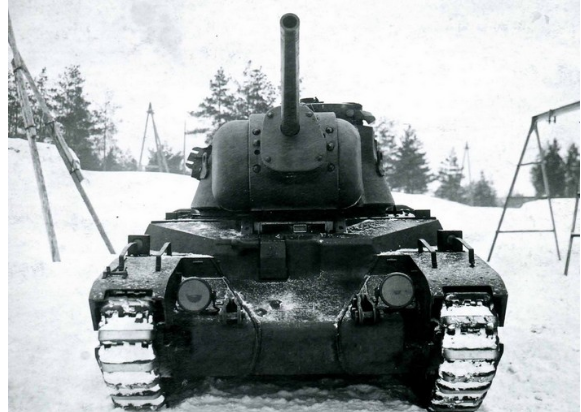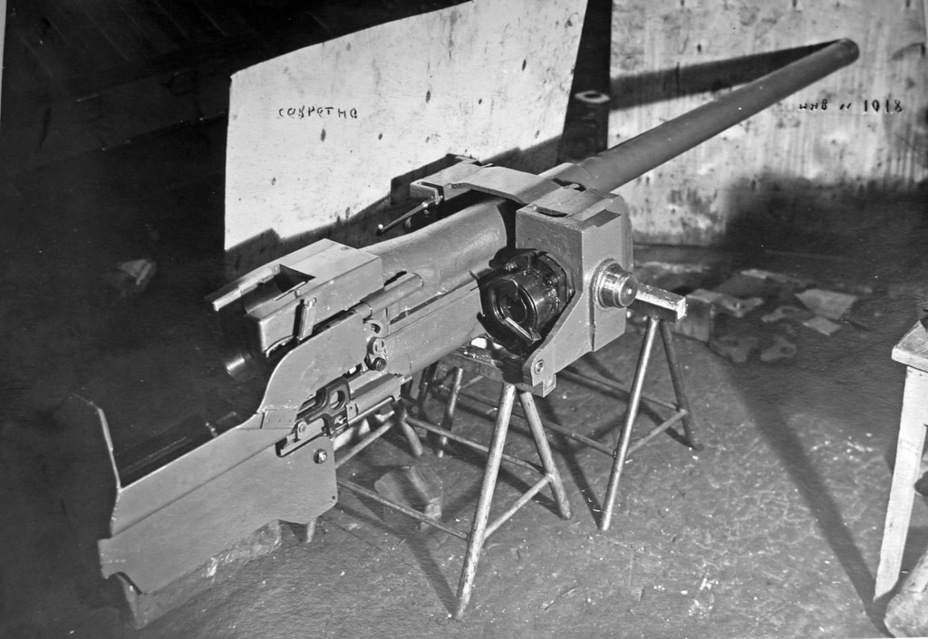Historically the British armour production in WWII was somewhat all over the place, while the British empire did build an impressive number of tanks, this was spread out over a vast array of makes and models, crusader, coventry, cavalier, churchill, comet, valentine, matilda, and many others. Many of these tanks suffered from having a small turret unable to mount a gun larger than they had been initially designed for, such as the two pounder, and later six pounder.
What I am wondering is what the effects would be if the British developed, say in 1941, a tank design that would be the equivalent of the German Panzer III and IV, the Soviet T-34, and the American M4 series. Say this theoretical tank is known as the Champion, production is being setup as France falls, and after the evacuation of Dunkirk the tank is rushed into production, as most of the setup is already in place. The vehicle is relatively fast, but also well armoured and mechanically reliable. With modification being a relatively simple affair.
The vehicle is built initially in just a handful of factories, as post Dunkirk the British army needs all the tanks it can get, even older models, and so cant afford to convert totally to a new type. The Champion has a two pounder initially, though it is designed for the six pounder, again the British are building all the guns they can to replace losses, rather than convert production to new types. The tanks are initially kept close at home to defend the British isles from German invasion, only later being sent to fight in North Africa. The type proves very reliable, and is built alongside the Valentine and Churchill tanks as well.
The tank is rearmed in the 42-43 period to the new six pounder guns and recives a bigger turret with better radios, and a new engine to make it faster, even as it gets heavier armour in response to newer German guns. From there the tank proceeds to fight in Sicily, Italy, and the Normandy landings. Serving alongside the British Shermans, as well as the Churchill. The tank is experimentally rearmed, in some versions, with the 17 pounder, but this proves very cramped. Much more so than the Sherman Firefly, and the conversion is not carried out to a large scale.
The end of the war in Europe sees the Champion finally brought out of production as the vehicle is now showing its age. The new Comet with a seventeen pounder largely fills the roll the Champion had largely filled before. The tank is instead exported in large numbers to many of the new nations emerging out of the war, as well as the nations emerging from decolonization.
Not certain how this would come about exactly, or how plausible it is, but just thought I would throw it out there and ask, what would the effects be on the British army if they had a semi-standard tank model? How would the war have been different if the British army had a well armed and reliable tank in the desert? And how would the British army have fared with a capable and well armed, but fast tank for the normandy landings, and would the British have had to rely as heavily on American tanks in the latter stages of the war?
What I am wondering is what the effects would be if the British developed, say in 1941, a tank design that would be the equivalent of the German Panzer III and IV, the Soviet T-34, and the American M4 series. Say this theoretical tank is known as the Champion, production is being setup as France falls, and after the evacuation of Dunkirk the tank is rushed into production, as most of the setup is already in place. The vehicle is relatively fast, but also well armoured and mechanically reliable. With modification being a relatively simple affair.
The vehicle is built initially in just a handful of factories, as post Dunkirk the British army needs all the tanks it can get, even older models, and so cant afford to convert totally to a new type. The Champion has a two pounder initially, though it is designed for the six pounder, again the British are building all the guns they can to replace losses, rather than convert production to new types. The tanks are initially kept close at home to defend the British isles from German invasion, only later being sent to fight in North Africa. The type proves very reliable, and is built alongside the Valentine and Churchill tanks as well.
The tank is rearmed in the 42-43 period to the new six pounder guns and recives a bigger turret with better radios, and a new engine to make it faster, even as it gets heavier armour in response to newer German guns. From there the tank proceeds to fight in Sicily, Italy, and the Normandy landings. Serving alongside the British Shermans, as well as the Churchill. The tank is experimentally rearmed, in some versions, with the 17 pounder, but this proves very cramped. Much more so than the Sherman Firefly, and the conversion is not carried out to a large scale.
The end of the war in Europe sees the Champion finally brought out of production as the vehicle is now showing its age. The new Comet with a seventeen pounder largely fills the roll the Champion had largely filled before. The tank is instead exported in large numbers to many of the new nations emerging out of the war, as well as the nations emerging from decolonization.
Not certain how this would come about exactly, or how plausible it is, but just thought I would throw it out there and ask, what would the effects be on the British army if they had a semi-standard tank model? How would the war have been different if the British army had a well armed and reliable tank in the desert? And how would the British army have fared with a capable and well armed, but fast tank for the normandy landings, and would the British have had to rely as heavily on American tanks in the latter stages of the war?

